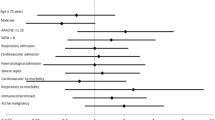Abstract
Objective: This study compares perfluorocarbon broncho-alveloar lavage (PFC-BAL) with isotonic saline broncho-alveolar lavage (saline-BAL) in an experimental model of meconium aspiration in adult guinea pigs. Design: Prospective controlled experimental study. Patients and methods: Ten male guinea pigs were given 1 ml of human meconium, diluted to 10 % in isotonic saline, via tracheostomy and then artificially ventilated. After stabilization, five animals (control group) underwent BAL with 10 ml/kg isotonic saline solution. After bronchial suctioning, a further BAL with 2 ml/kg saline was performed. The other five animals (study group) underwent BAL with 10 ml/kg of PFC (RIMAR 101). Bronchosuction was effected at 5 min and then a BAL with PFC 2 ml/kg was performed. Both groups received conventional mechanical ventilation during the lavage procedures. Within 20 min all the saline-BAL treated animals died, whereas the PFC-BAL treated animals survived and were then treated with total liquid ventilation (TLV) by gravity. Measurements and results: After meconium inhalation in both groups, a large alveolar-arterial oxygen difference, hypercarbia, severe acidosis and tachycardia were noticed. In PFC treated animals, an improvement in blood gases was noted and acid-base balance remained stable compared to saline-BAL treated animals. No haemodynamic change was observed during or after PFC-BAL, while during saline-BAL there was evidence of bradycardia, hypotension and respiratory failure, which led to the death of the animals. The histological lung sections in the PFC-BAL group showed evidence of normal alveolar expansion with a minimal presence of meconium debris in the small bronchioles. In saline-BAL treated animals, the lung structure appeared severely compromised with the presence of meconium in bronchioles and alveoli, intra-alveolar oedema and haemorrhagic areas. Conclusions: This study confirms the detrimental effects of meconium aspiration and the impairment of lung function following saline-BAL. By contrast, PFC-BAL and TLV by gravity seemed to prevent absorption of meconium, facilitate its removal, improve gas exchange and reduce lung barotrauma.
Similar content being viewed by others
Author information
Authors and Affiliations
Additional information
Received: 23 June 1997 Accepted: 19 February 1998
Rights and permissions
About this article
Cite this article
Marraro, G., Bonati, M., Ferrari, A. et al. Perfluorocarbon broncho-alveolar lavage and liquid ventilation versus saline broncho-alveolar lavage in adult guinea pig experimental model of meconium inhalation. Intensive Care Med 24, 501–508 (1998). https://doi.org/10.1007/s001340050603
Published:
Issue Date:
DOI: https://doi.org/10.1007/s001340050603




